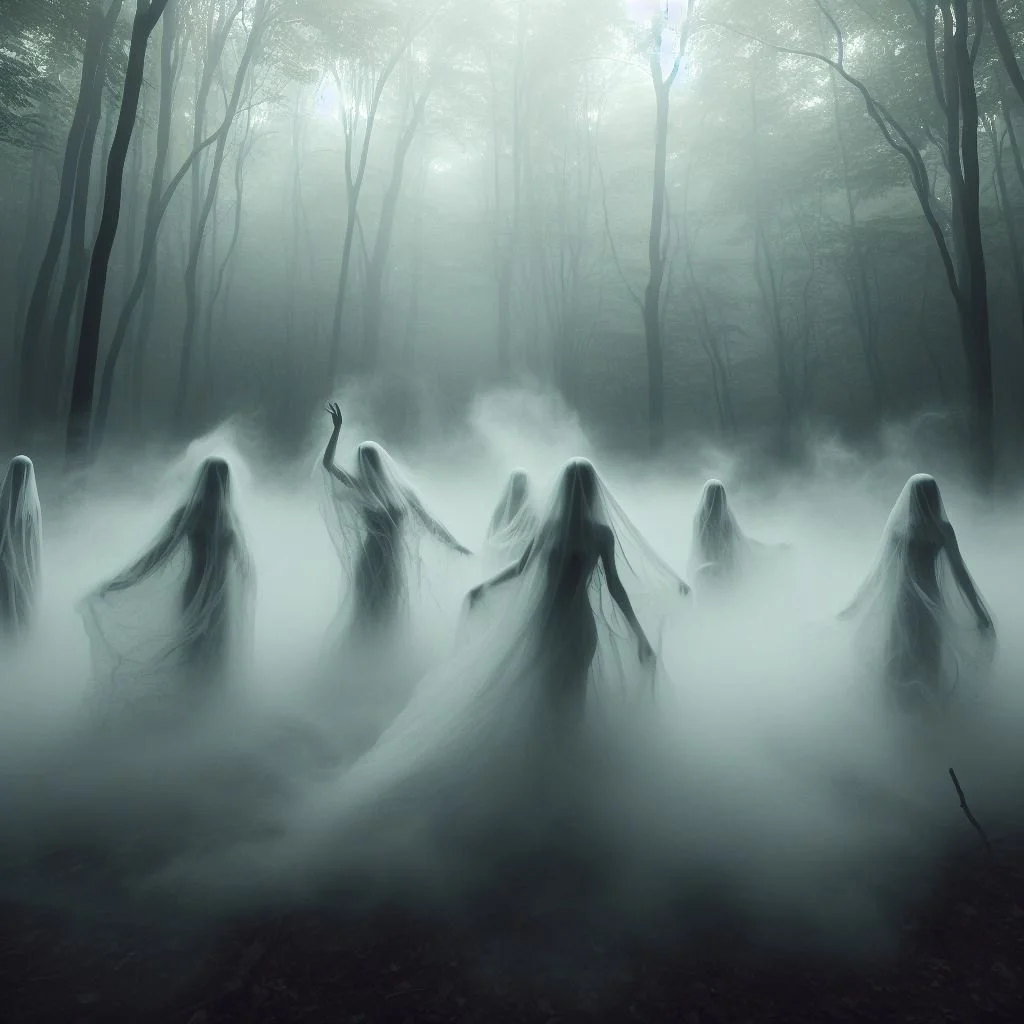Fog Lore: The Witte Wieven
Today we explore a Dutch folklore tale about the ghostly Witte Wieven often associated with the fog and mist. Stories of them date back at least to the 600s ACE. Early medieval literature described the Witte Wieven as pranksters and pests. Later, Christian stories taught that they are ghost witches to avoid. (Source: Belgian Folklore – The Gold Scales (nvg.org))
Witte Wieven, has been translated to white women or wise women. Historically they're believed to be the ghosts of ancient healers and herbalists. Some stories say they were evil and lured people into the fog, while others say they were kind and helped those in need. They always appeared at night, wearing white clothes and veils, and they could blend in with the mist.
““In the mists of autumn you find them; wrapped in their veils of fog. They float around the heath, between light and dark, when you can only just make out the shapes. When the moon is bright they pass in long processions. High the veils wave and swish through the air; they seem to cover the heath like fine mists. Over the ditches and streams they rise and fall: now in tight rows, then spread out over a large space. Have you never heard the soft singing, which moves through every leaf, which glides past the bushes and dies away in the woods like the sound of wondrous music; impossible to follow and barely distinguishable from the rustling of the wind? They are always and everywhere the white women, who with their long clothes brush past everything they meet on their way, with soft fine sounds.”
”
The White Women of Montferland
A classic story in Dutch folklore is the story of a poor old farmer named Gert van Beek. One evening, he was sitting in his favourite pub, Het Zilveren Peert, somewhere in the municipality of Montferland. After a night of heavy drinking, around midnight, the farmer was ready to return home.
As he got up to leave, a grizzled blacksmith stopped him. “Do not leave just yet farmer, it’s a full moon tonight and around now Witte Wieven are lurking in the forests,” he growled, “wait a little longer before you leave.” Van Beek turned to the blacksmith, and with a drunken arrogance, laughed in his face. “Bah, those ghostly wenches don’t scare me!” he retorted, “If I see them, I’ll dance with them all night long.” Then, with that, he staggered out of the door.
On the way back, Van Beek took a shortcut through the forest, the mist began to curl up between the trees. Three ghostly figures began to materialize from the mist and approached the farmer. The farmer watched as the forms of three women began to take shape and still filled with drunk courage, stormed up to the apparitions and grabbed one by the arm. “Dance with me!” he shrieked, as he began to twirl the figure in his arms.
Gert’s glee soon turned to panic as the woman unexpectedly pulled him in tighter and began to spin the farmer around and around. The farmer frantically tried to pull away, but he no longer had control of his body and was forced to dance all night long with the ghastly spirit. The next day, his body was found in the forest by the townsfolk. He had died from exhaustion after being forced to dance all night.
The following places were named after the Witte Wieven, and reports of legends:
In the Netherlands:
Near the Village of Eefde is Wittewievenbult: this translates as "White Women Hill". Local legend holds that White Women appear on Christmas Eve every year and dance on this hill.
Near the Village of Barchem is Wittewijvenkuil: this translates as "White Women Pit". It is a pit between two local hills. Local legends say that three white women lived there.
(Source: Witte Wieven - Wikipedia)




